Hispanic Heritage Month at the Aquarium
Learn about a few animals in the Aquarium that reside in or around Hispanic countries.
By New England Aquarium on Thursday, October 13, 2022

Happy Hispanic Heritage Month!
In honor of Hispanic Heritage Month, we’re featuring animals in the Aquarium that reside in or around Hispanic countries. Learn some fun facts about these marine animals below, and see if you can spot them next time you’re at the Aquarium.
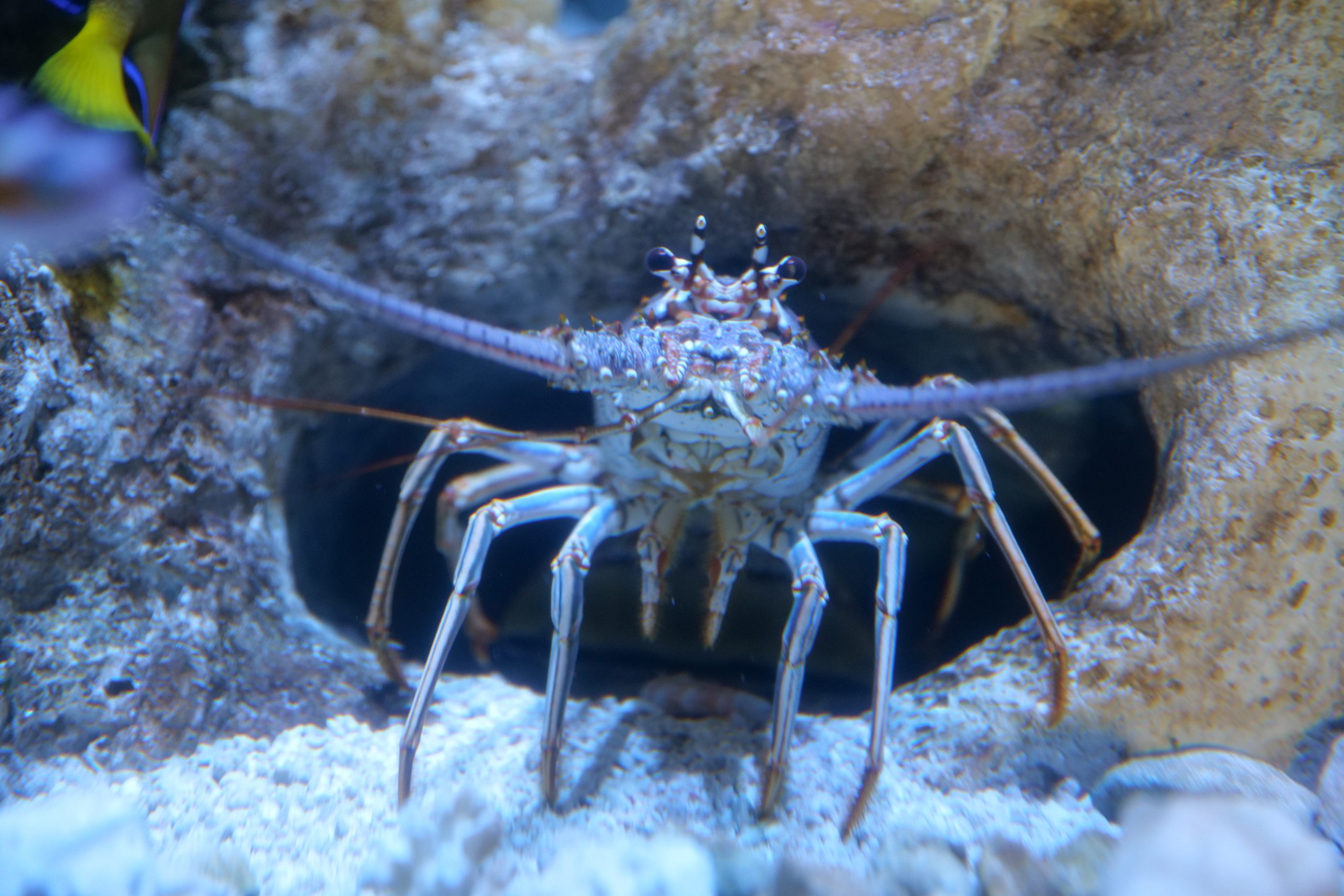
Caribbean spiny lobster
Panulirus argus
Where are they found?
Caribbean spiny lobsters are found in the southeastern United States (from North Carolina to Texas), in the Gulf of Mexico, throughout the Caribbean Sea, and all the way down to Brazil.
Fun facts:
The Caribbean spiny lobster is one of 30 different kinds of lobsters found in tropical/subtropical habitats. Their shell is covered in projections that look like spines, which is why they are called a “spiny” lobster. Unlike the American lobster, spiny lobsters do not have large front claws!
En Español:
La langosta espinosa del Caribe es uno de los 30 tipos diferentes de langostas que se encuentran en hábitats tropicales y subtropicales. El caparazón está cubierto de proyecciones que parecen espinas, por lo que se les llama langosta “espinosa”. A diferencia de la langosta americana, las langostas espinosas no tienen garras delanteras grandes.
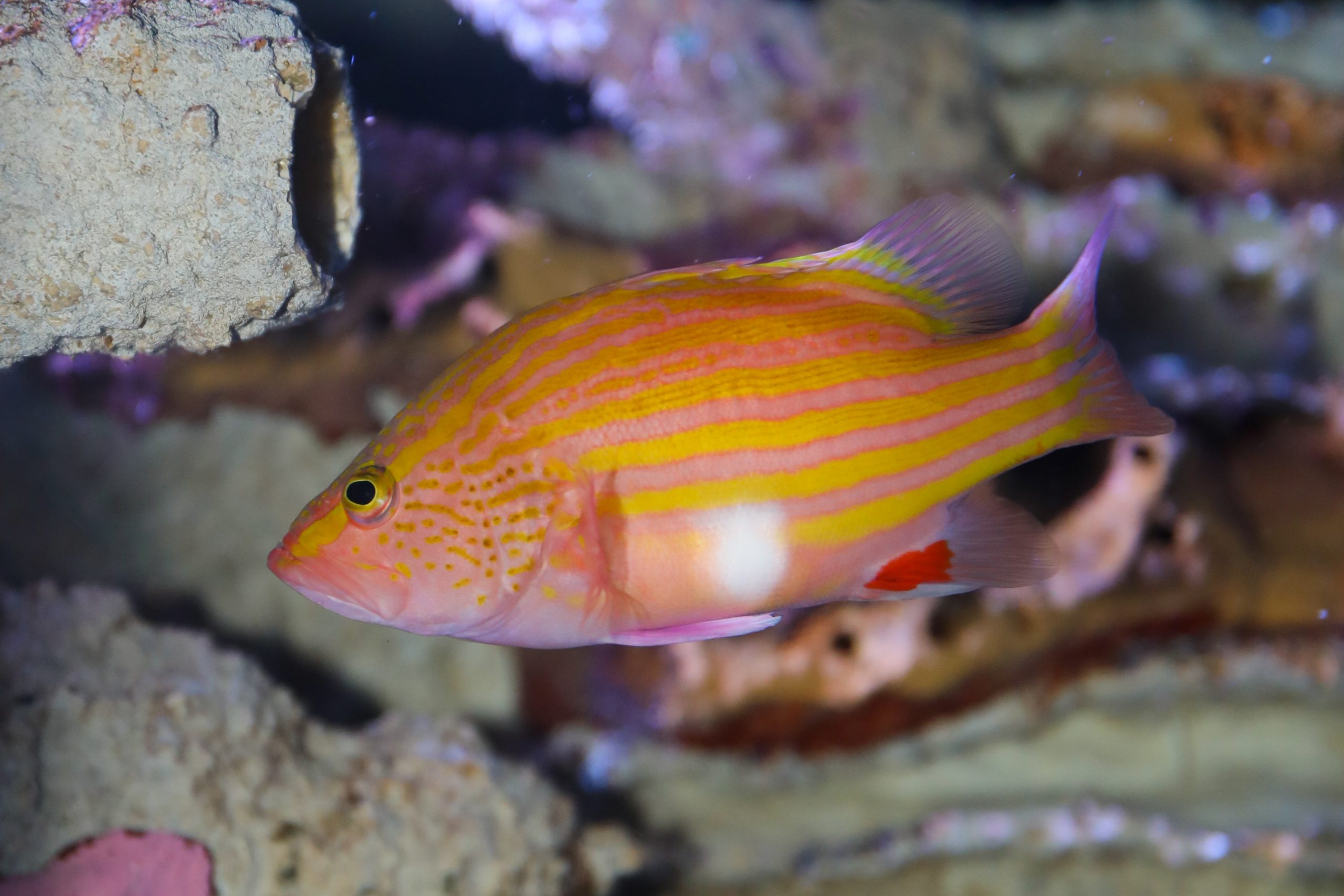
Spanish flag
Gonioplectrus hispanus
Where are they found?
This fish can be found in the Western Atlantic off North Carolina, all the way to the Gulf of Mexico, the Caribbean, and south to Brazil.
Fun facts:
With pink and yellow alternating stripes, this fish gets its name from its resemblance to the flag of Spain! The red dot on their rear fin helps other Spanish Flag fish recognize members of their species, the sharp spines on their fins help protect them from larger predators, and they often swim upside down or vertically!
En Español:
Con rayas alternas rosas y amarillas, este pez recibe su nombre por su parecido con la bandera de España. El punto rojo en su aleta trasera ayuda a otros peces de bandera española a reconocer a los miembros de su especie, las espinas afiladas en sus aletas ayudan a protegerlos de los depredadores grandes y, a veces, nadan boca abajo o verticalmente.
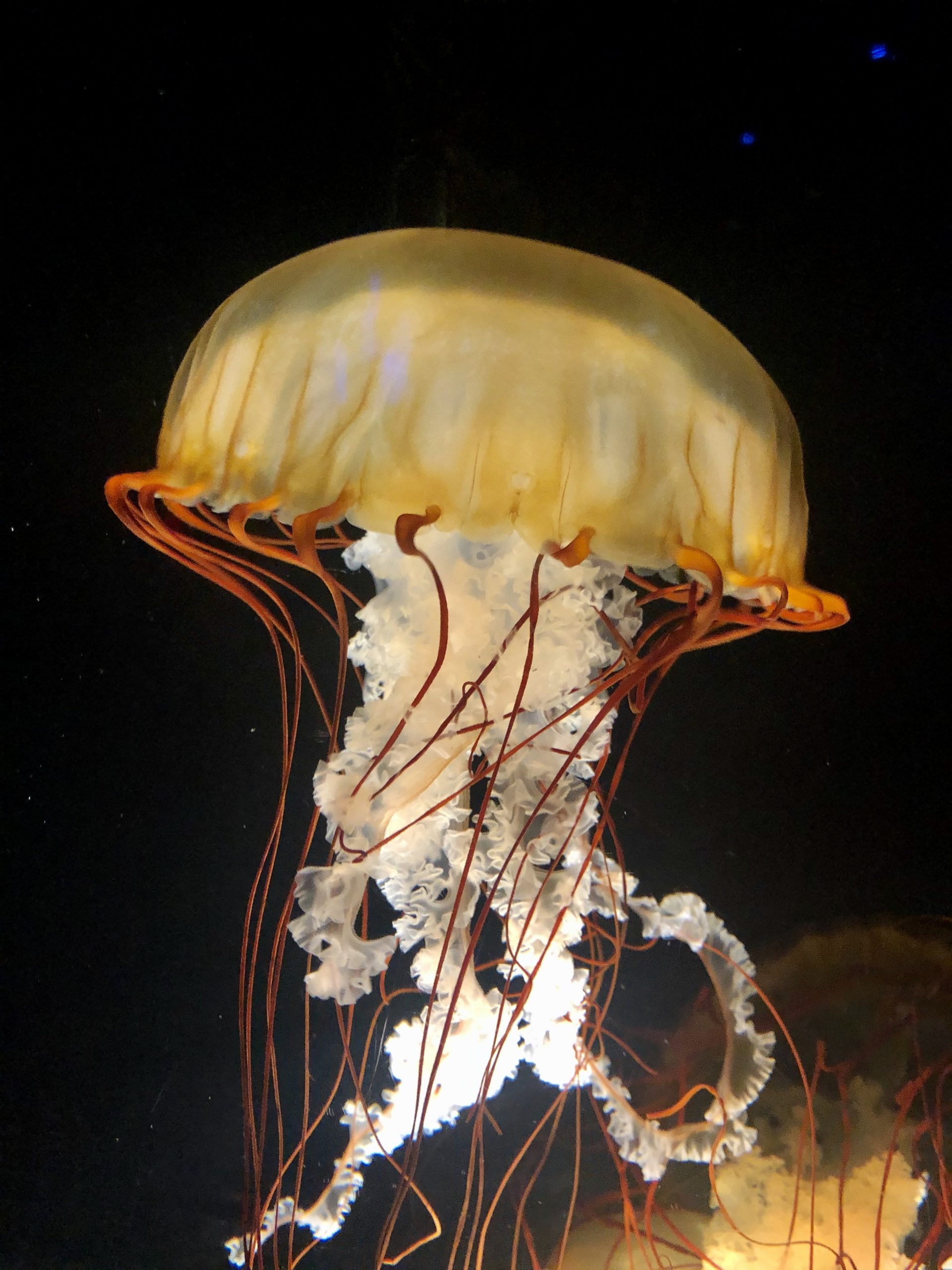
South American sea nettle
Chrysaora plocamia
Where are they found?
South American sea nettles are found in the waters of (you guessed it!) South America! They can be found in the waters near Peru, Chile, Argentina, and even Uruguay.
Fun facts:
The South American sea nettle is a type of jelly, which means its body is 98% water! Jellies also have no heart and very thin gelatinous bodies. Instead of a brain, they have a very loose network of nerves called a “nerve net.”
En Español:
La ortiga de mar sudamericana es un tipo de medusa, entonces su cuerpo es 98% agua. Las medusas no tienen un corazón y tienen cuerpos gelatinosos muy delgados. En lugar de un cerebro, tienen una red de nervios llamada “red nerviosa”.
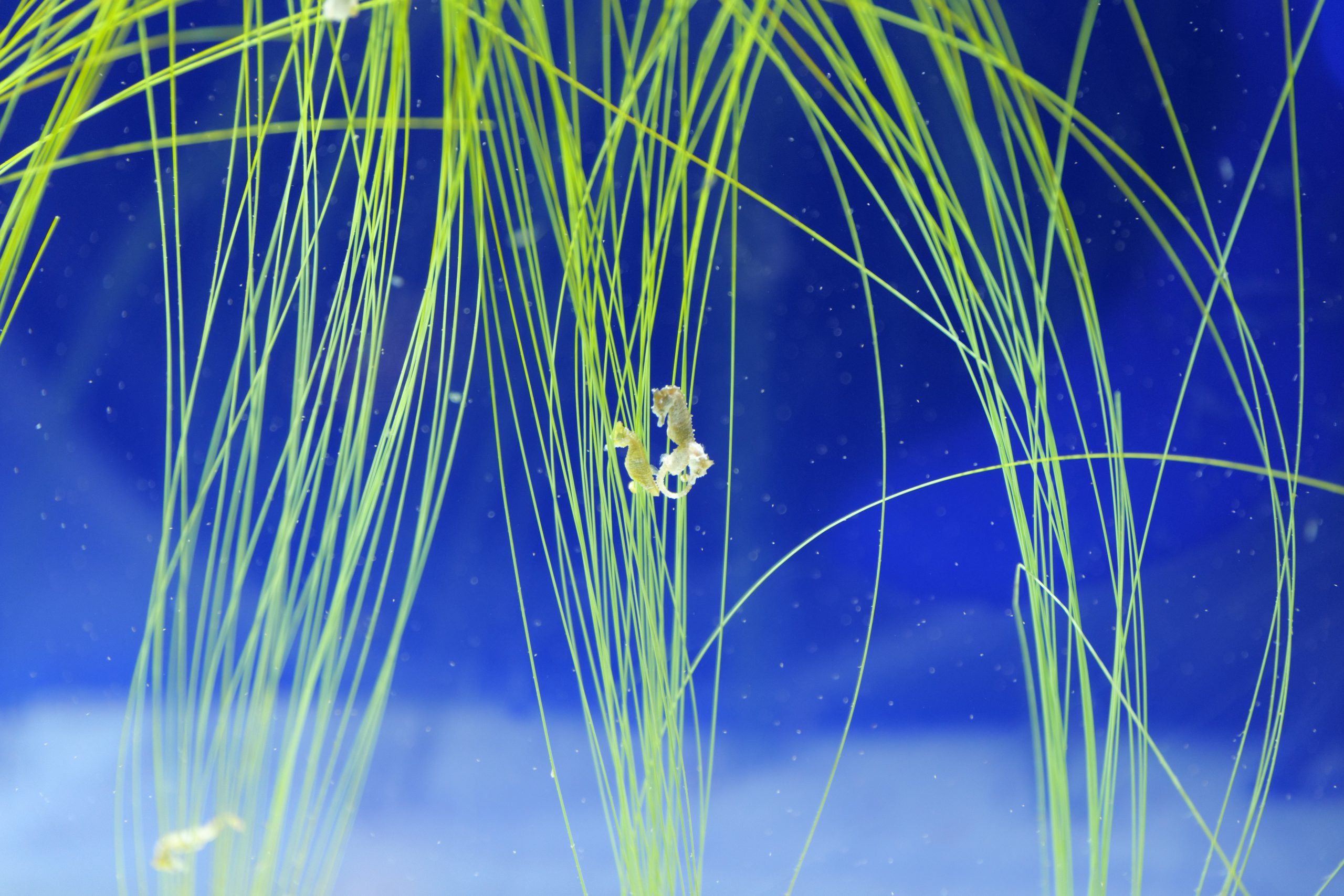
Caribbean dwarf seahorse
Hippocampus zosterae
Where are they found?
Caribbean dwarf seahorses live in shallow seagrass beds in the Gulf of Mexico, along the Atlantic Coast of Florida, and in the Caribbean.
Fun facts:
The dwarf seahorse is the third smallest seahorse species in the world at ~ 2cm! Seahorses have been known to change their colors as a form of camouflage, but also during social situations. To communicate, they produce rapid clicking sounds that have been observed during courtship, feeding, and other behaviors.
En Español:
¡El caballito de mar pequeño es la tercera especie de caballito de mar más pequeña del mundo con ~ 2 cm! Los caballitos de mar cambian de color como una forma de camuflaje, pero también durante situaciones sociales. Para comunicarse, producen chasquidos rápidos que se han observado durante el cortejo, la alimentación y otros comportamientos.
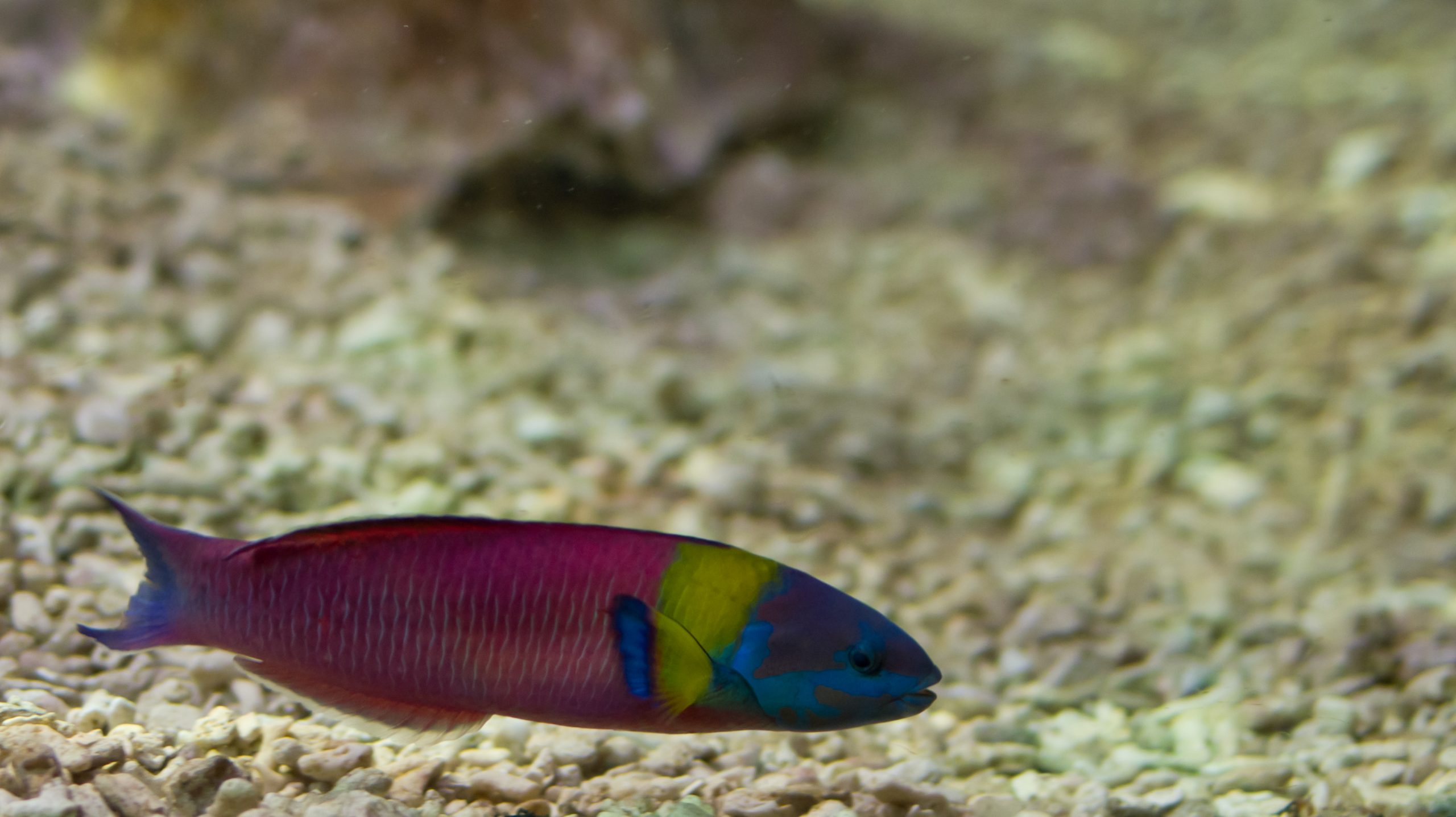
Cortez rainbow wrasse
Thalassoma lucasanum
Where are they found?
The Cortez Rainbow Wrasse is found in the Gulf of California (also known as the Sea of Cortez), south to Panama, and the Galapagos Islands.
Fun facts:
This fish inhabits shallow, rocky lagoons and are usually seen swimming in groups of 50+. Named for its native environment and its rainbow colors, this fish actually has two color phases! As a juvenile, it has yellow, black, and red horizontal stripes, and as an adult, its “rainbow” colors appear.
En Español:
Este pez habita en lagunas rocosas y generalmente se los ve nadando en grupos de más de 50. Llamado así por su entorno nativo y sus colores del arco iris, este pez en realidad tiene dos fases de color. De juvenil presenta rayas horizontales amarillas, negras y rojas, y de adulto aparecen sus colores “arcoíris”.
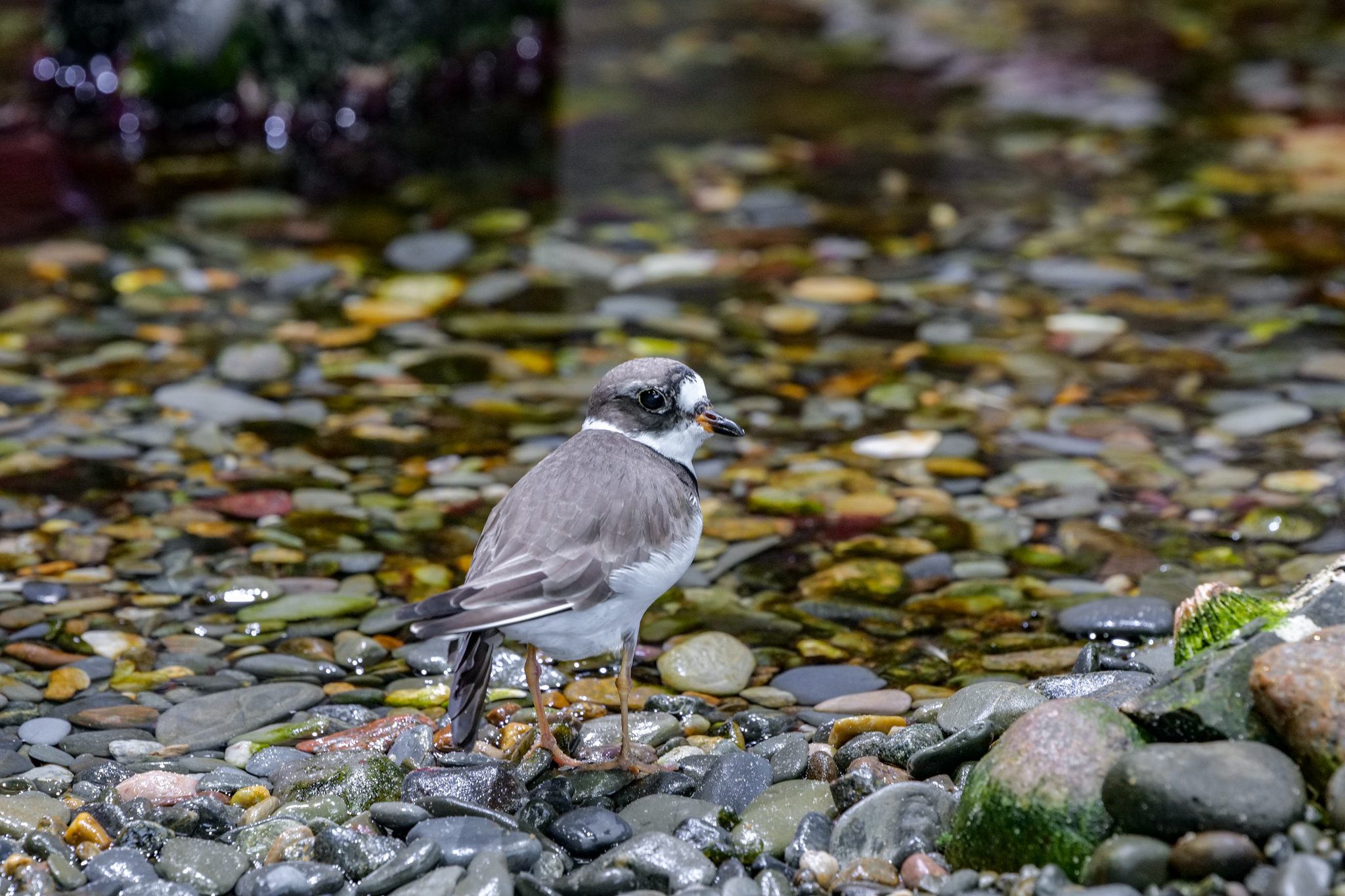
Shorebird
Where are they found?
The species of shorebirds in our exhibit can all be found along the New England coast, but many of them migrate and spend the winter in South America. (Piping plovers prefer a shorter flight and head to Mexico instead!)
Fun facts:
Shorebirds undertake some of the longest migrations in the bird world. Species like the sanderling, semipalmated sandpiper, and semipalmated plover breed as far north as the Arctic and fly all the way to South America during non-breeding season. New England beaches are a critical stopover for them on their way!
En Español:
Las aves playeras emprenden algunas de las migraciones más largas del mundo de las aves. Especies como el correlimos playero, el playero semipalmeado y el chorlito semipalmeado se reproducen en el Ártico y vuelan hasta América del Sur durante la temporada no reproductiva. ¡Las playas de Nueva Inglaterra son una parada fundamental para ellos en su camino!
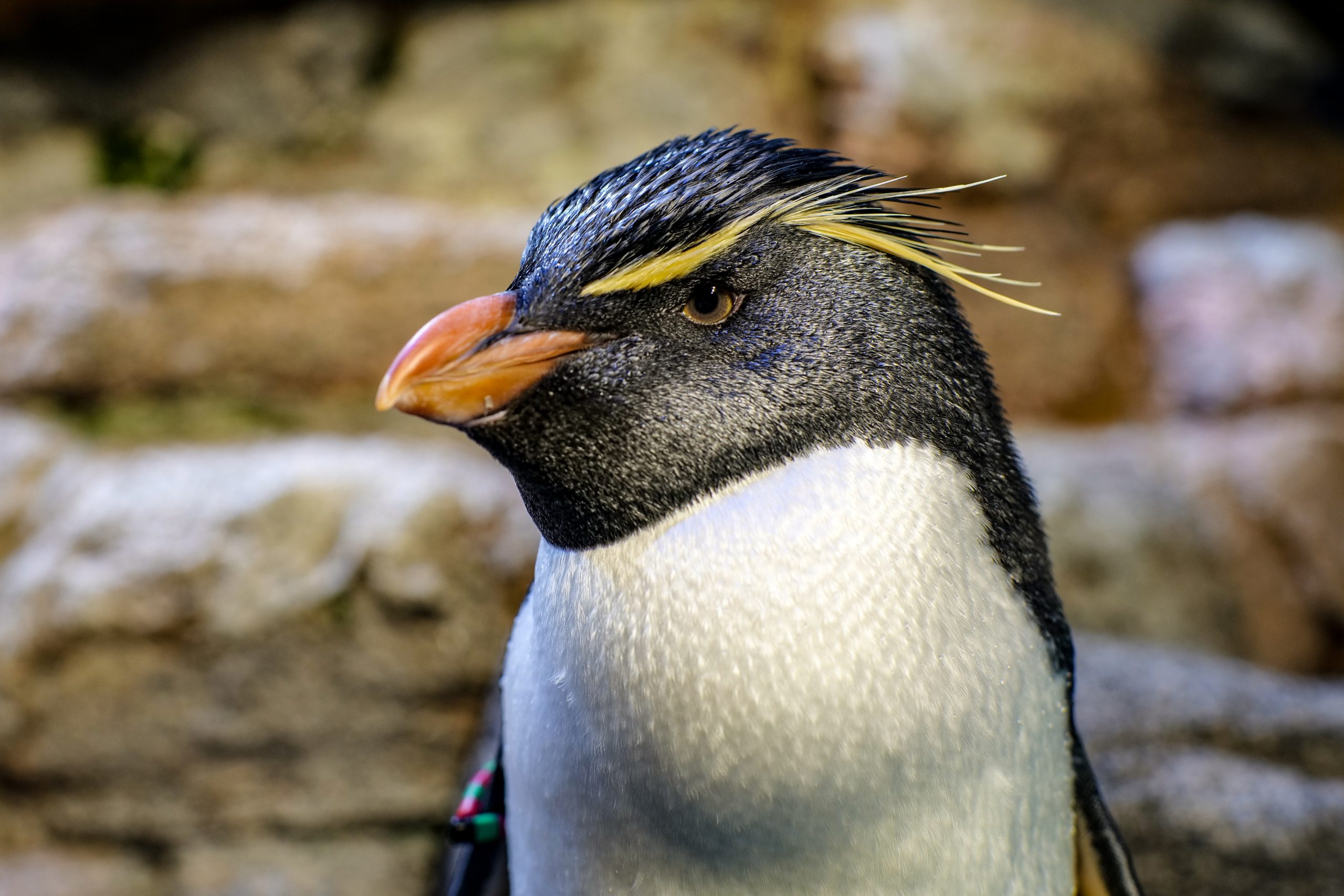
Southern rockhopper penguin
Eudyptes chrysocome
Where are they found?
Southern rockhoppers live on the rocky islands off the coasts of Chile, Argentina, and the Falkland Islands, and on the sub-Antarctic islands in the Indian and Pacific oceans.
Fun facts:
A Southern rockhopper penguin can jump their entire body height from a standing position! Their scientific name, Eudyptes chrysocome, comes from the Greek words for “good diver” and “golden hair”—a pretty good description for an animal that can dive over 300 feet deep! Their “golden hair,” or crests, helps them identify other members of their species + each penguin has a slightly different color, shape, or style of crests.
En Español:
¡Un pingüino penacho amarillo del sur puede saltar toda la altura de su cuerpo desde una posición de pie! Su nombre científico, Eudyptes chrysocome, proviene de las palabras griegas para “buen buceador” y “cabello dorado”, ¡una descripción bastante buena para un animal que puede sumergirse a más de 300 pies! Su “cabello dorado”, o crestas, les ayuda a identificar a otros miembros de su especie y cada pingüino tiene un color, forma o estilo de cresta diferente.
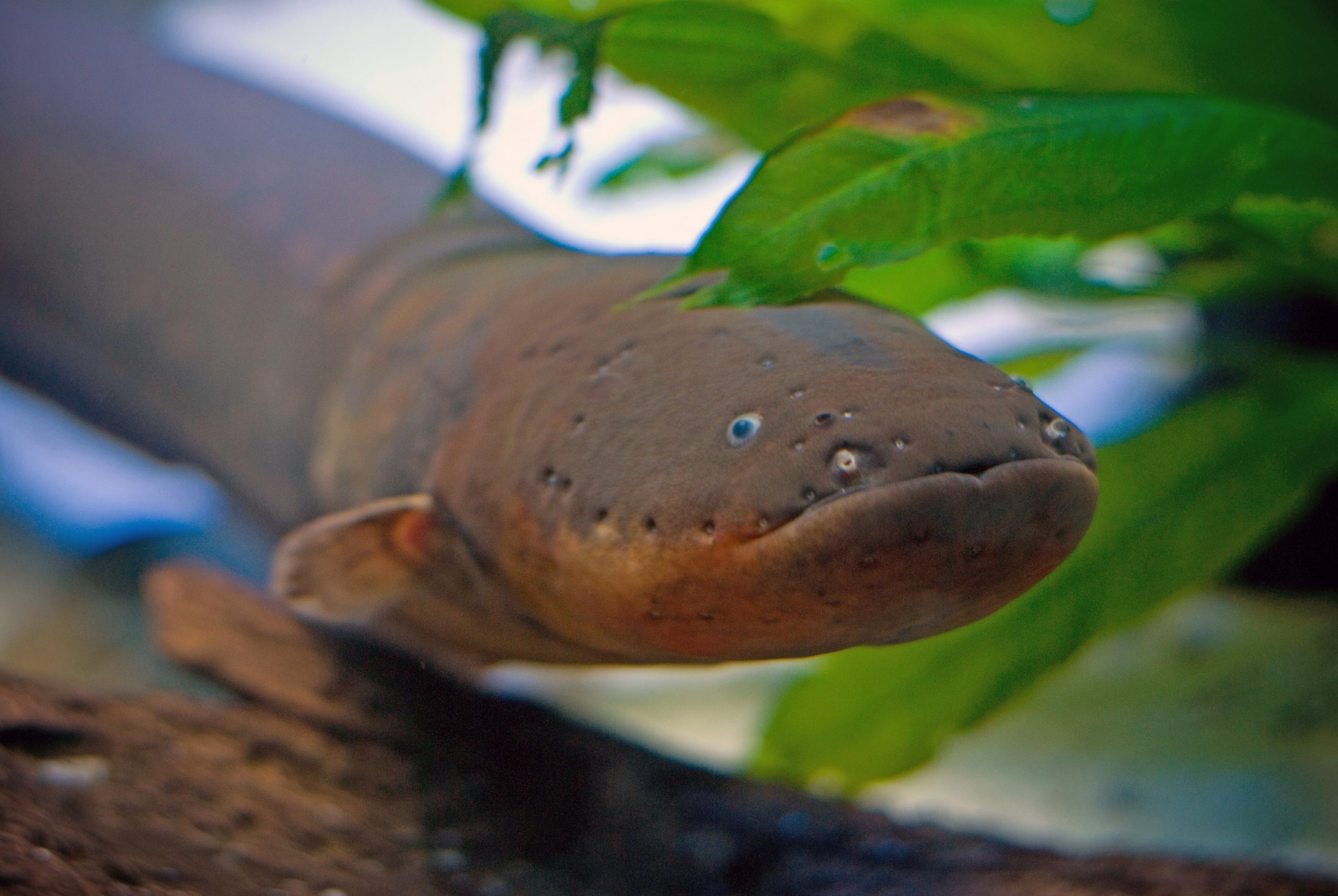
Electric eel
Electrophorus
Where are they found?
Electric eels live in freshwater creeks and swamps in the northeast region of South America.
Fun facts:
Even though they’re called “eels,” electric eels are actually a species of knifefish. Because they have poor eyesight, they use electrolocation to “see” and pinpoint their prey before delivering a more powerful shock.
En Español:
Aunque se les llama “anguilas”, las anguilas eléctricas son en realidad una especie de pez cuchillo. Las anguilas eléctricas tienen mala vista, entonces usan la electrolocalización para “ver” y encontrar a su presa antes de aplicar una descarga más poderosa.
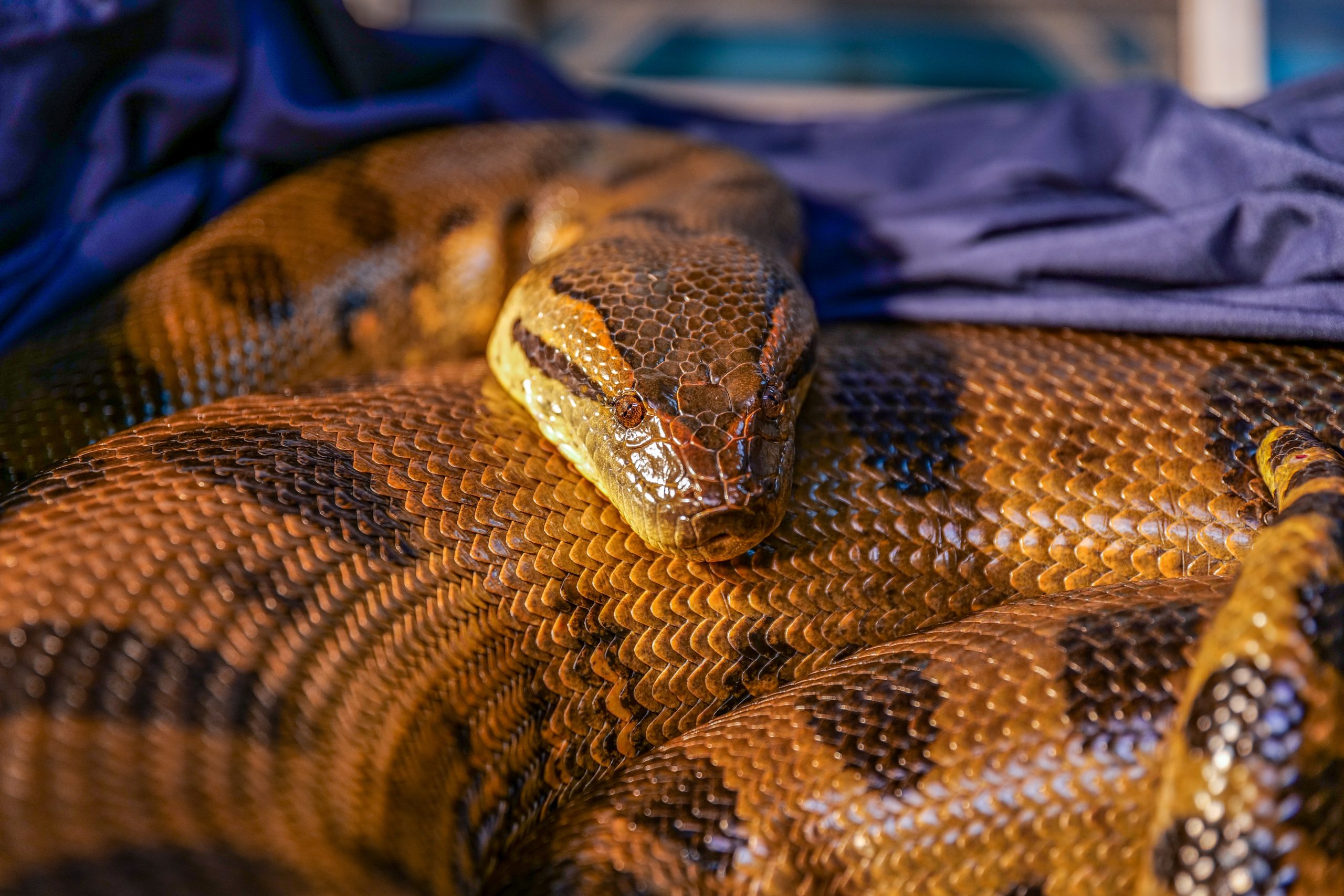
Green anaconda
Eunectes murinus
Where are they found?
Anacondas live mainly in the tropical rainforests of the Amazon and Orinoco basins but can be found in Colombia, Brazil, Ecuador, Peru, Bolivia, the Guianas, Paraguay, and Trinidad.
Fun facts:
Anacondas are a member of the boa family and are the world’s heaviest snake. Despite what you may have learned from the movie “Anaconda”, these snakes aren’t a threat to humans in real life. Anacondas do eat some large prey, including capybaras and white-tailed deer, but will also snack on eggs, other reptiles, and fish.
En Español:
Las anacondas son miembros de la familia de las boas y son la serpiente más pesada del mundo. Muy diferente de lo que hayas aprendido de la película “Anaconda”, estas serpientes no son una amenaza para los humanos en la vida real. Las anacondas comen presas grandes, como capibaras y venados, pero también comen huevos, otros reptiles y peces.
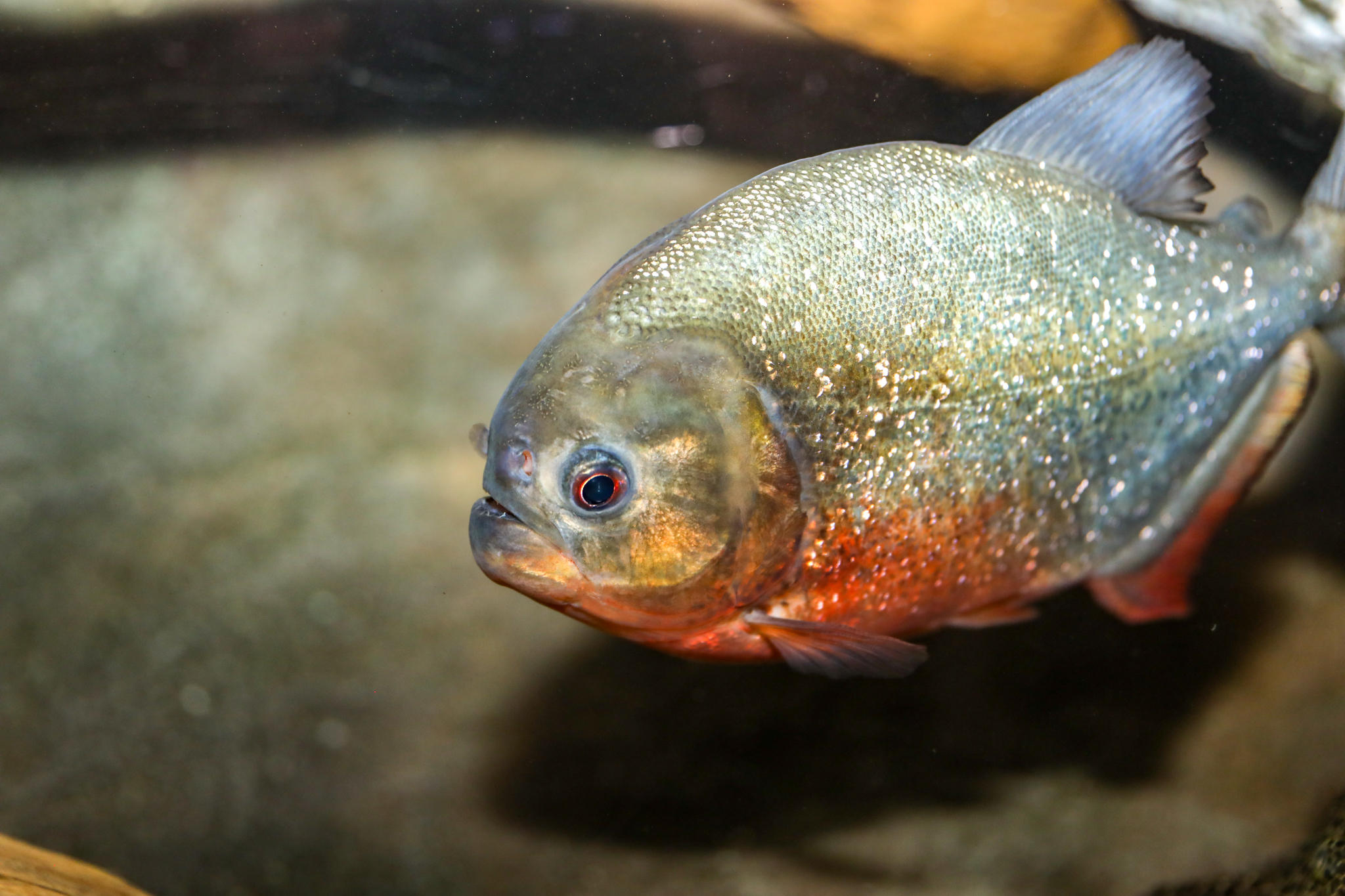
Red-Bellied Piranha
Pygocentrus nattereri
Where are they found?
Red-bellied piranha live throughout the Amazon River, Orinoco River, and Parana River basins, and can be found in Brazil, Paraguay, Peru, Uruguay, Ecuador, and Colombia.
Fun facts:
“Piranha” means “toothed fish” in Tupi-Guarani, one of the languages spoken by Brazil’s indigenous people. Those teeth help piranhas catch and eat food, which includes insects, crustaceans, and other fish. Piranhas will lose all the teeth on one side of their mouth and simultaneously replace them with a new set of teeth growing under the old ones.
En Español:
“Piraña” significa “pez dentado” en Tupí-Guaraní, uno de los idiomas hablados por los pueblos indígenas de Brasil. Esos dientes ayudan a las pirañas a atrapar y comer alimentos, que incluyen insectos, crustáceos y otros peces. Las pirañas perderán todos los dientes de un lado de la boca y, al mismo tiempo, los reemplazarán con nuevos dientes.




